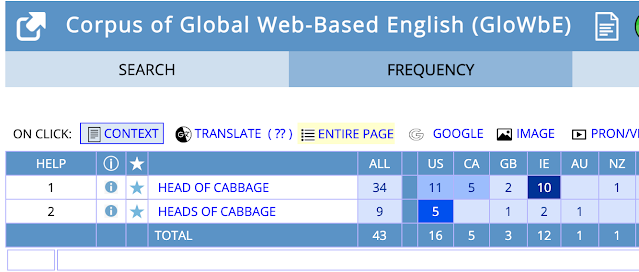Before the school year started, the 16-year-old and I (BrE) had a day out at a "Learn to Crochet" course. Here's my first. slightly (BrE) wonky (orig AmE) granny square (which, according to this site were once called American crochet in Europe):

The instructor started by warning to always ascertain the provenance of a crochet pattern before embarking on it because the US and UK terminology differ in potentially disastrous ways. In the take-home materials, we were given two charts. One spells out the differences in names of stitches. What's called single crochet in AmE is double crochet in BrE—with (orig. BrE) knock-on effects for other stitches. So, AmE double is BrE treble, AmE half-double is BrE half-treble, and AmE triple treble is BrE double treble.
 |
Now the obvious question is: how can you get to double without having single first? The answer (according to KnitPro) is that the BrE is describing the number of loops on one's hook during the stitch, and the AmE is describing the number of "yarnovers when pulling up your first loop". Yarn over (the site uses it as one word and two) is another difference according to that site: in BrE it's called yarn over hook. Yarnover is essentially how many actions you're doing to complete the stitch. That KnitPro page has more description.
Let's just pause here and note that crochet is pronounced differently in the two countries because of the general rule that for two-syllable French borrowings, BrE stresses the first syllable and AmE the second one. And then there's what happens when AI gets its hand on the pronunciation:
But back to the charts the instructor gave us. Just as there are differences in measurements for cooking, the measurements for crochet hooks are different in US and UK because of the "Americans haven't gone metric" problem. The US uses letter or number sizes, whereas the rest of the world uses more transparent millimeter measures. So, US size B = US size 1 = 2.25mm. From the chart below, it looks like no one knows what size N or P are.
 |
Now, this class wasn't really my first crocheting—I'd done straight lines and zigzag crocheting as a child. Also big in my Girl-Scouting (UK Girl-Guiding) childhood was (AmE) boondoggle. Nowadays, this is an American word that can mean 'a wasteful or useless product or activity', often in reference to (more AmE) government/(more BrE) public spending. Originally, it meant 'a trivial thing', from which came to be used for a kind of twisted leather object that Boy Scouts used for fixing their kerchiefs (click link for picture). It then extended to the weaving of flat plastic cords that was a popular craft back when I was a kid.
 |
And I thought of that this week when the Google Doodle in the UK was in hono(u)r of this craft (which has apparently had a revival), except it had the BrE name for it, borrowed from French: scoubidou.
The Google Doodle was about "Celebrating Scoubidous". On first reading, scoubidous looked like an adjective to me (SCOUb'dous, that which is scoubi?). Part of the reason I read it wrong the first time (even though I knew the word scoubidou) is that I wasn't expecting it to be plurali{s/z}ed. I use boondoggle as a mass noun, so for me the things in the photos are pieces of boondoggle (or something like that), rather than as boondoggles. I'm not sure if that's just me, and there's too much 'government spending' noise in the data for me to quickly check it. (Happy to hear from other former Girl Scouts on the matter.)
Is scoubidou related to Scooby Doo? Not directly, I think. There was a song Scoubidou in the 1950s, and I suspect that the craft and the cartoon dog were separately named after it. But the dog's name was for some time spelled/spelt Scoubidou in France.






























